The Legacy of Rome’s Military Machine
The thunderous march of Roman legions once echoed across three continents, creating an empire that would define Western civilization for millennia. Behind this military dominance stood not just superior weapons or tactics, but something far more revolutionary: organizational genius. While other ancient powers fielded armies, Rome built something unprecedented—a professional military institution with a sophisticated rank structure that transformed warfare forever.
What made Rome’s military hierarchy exceptional wasn’t merely its existence, but how it systematically balanced authority, responsibility, and accountability across multiple levels of command. This organizational framework proved so effective that its fundamental principles continue to shape modern military structures around the world today, from the United States to China.
The ranks that once commanded men on ancient battlefields from Britain to Babylon have modern counterparts commanding troops from Baghdad to the Baltic. Understanding this historical through-line reveals how deeply Rome’s military innovation continues to influence our world. For military historians, professional soldiers, or anyone fascinated by how ancient wisdom shapes modern institutions, the parallels between Rome’s legions and today’s armed forces offer remarkable insights into organizational leadership.
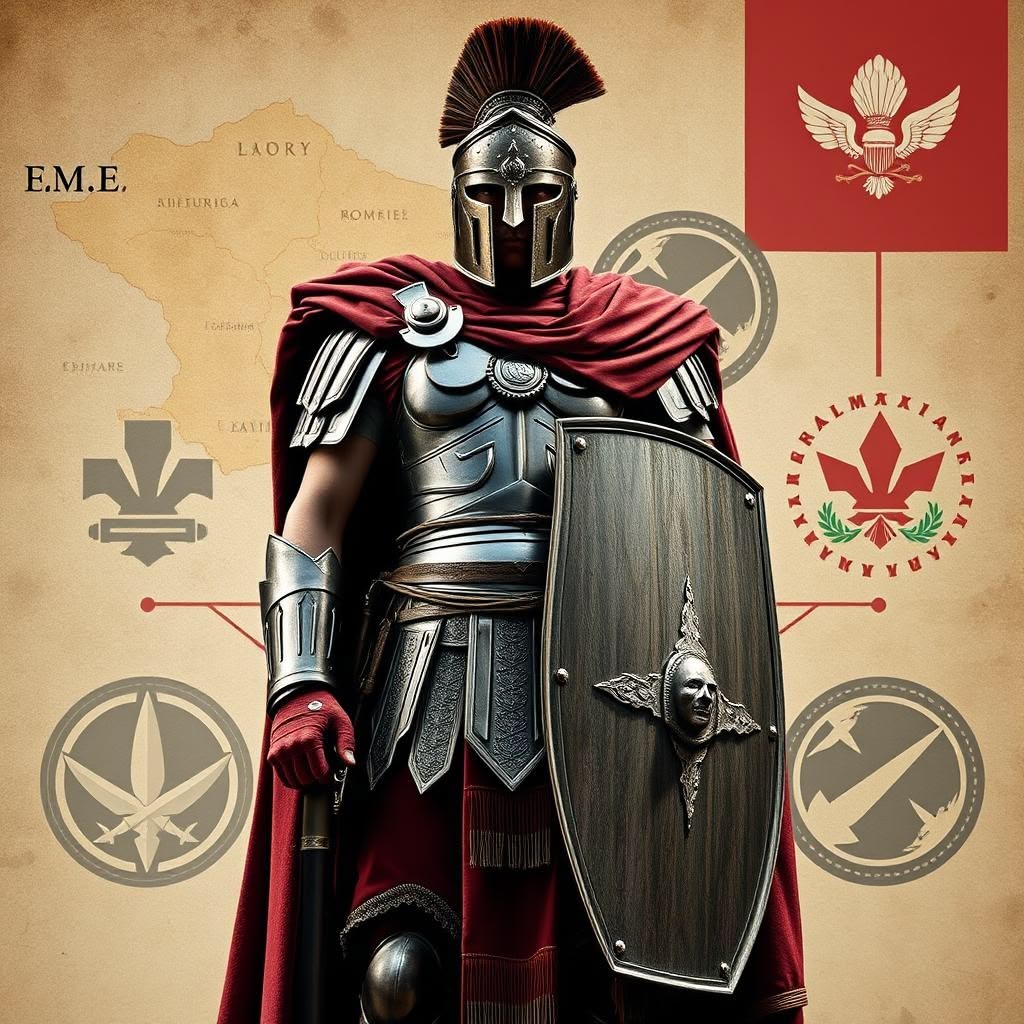
The Foundation: Rome’s Common Soldiers
The backbone of Rome’s military machine was the common legionary—the professional soldier who formed the front lines of combat. Unlike many contemporary armies that relied heavily on conscripts or mercenaries with questionable loyalty, the Roman military eventually developed a professional force with standardized training, equipment, and career progression.
At the entry level stood the miles gregarius, or common soldier. These men, typically recruited from Roman citizens (though this requirement evolved over time), committed to a standard 25-year term of service. They underwent rigorous training that transformed civilians into disciplined fighting units capable of executing complex maneuvers under the stress of battle.
The modern equivalent of these soldiers would be the Private (Army/Marines), Seaman (Navy), or Airman (Air Force) in NATO forces. Like their Roman predecessors, these modern ranks represent the entry point into military service—professional soldiers who form the operational foundation of their respective services.
Just above the common legionary stood the immunis, soldiers exempted from routine duties due to specialized skills or responsibilities. These might include engineers, medical staff, or other technical specialists. Their modern counterparts would be specialists or technical ratings in contemporary forces—soldiers with specific skills that place them slightly above the common rank but below non-commissioned officers.
One crucial difference between ancient and modern military structures becomes apparent at this level. While modern militaries have developed extensive specialized branches and technical positions, the Roman system maintained greater homogeneity among its common soldiers, with specialization occurring more through unit assignment than individual rank designation.
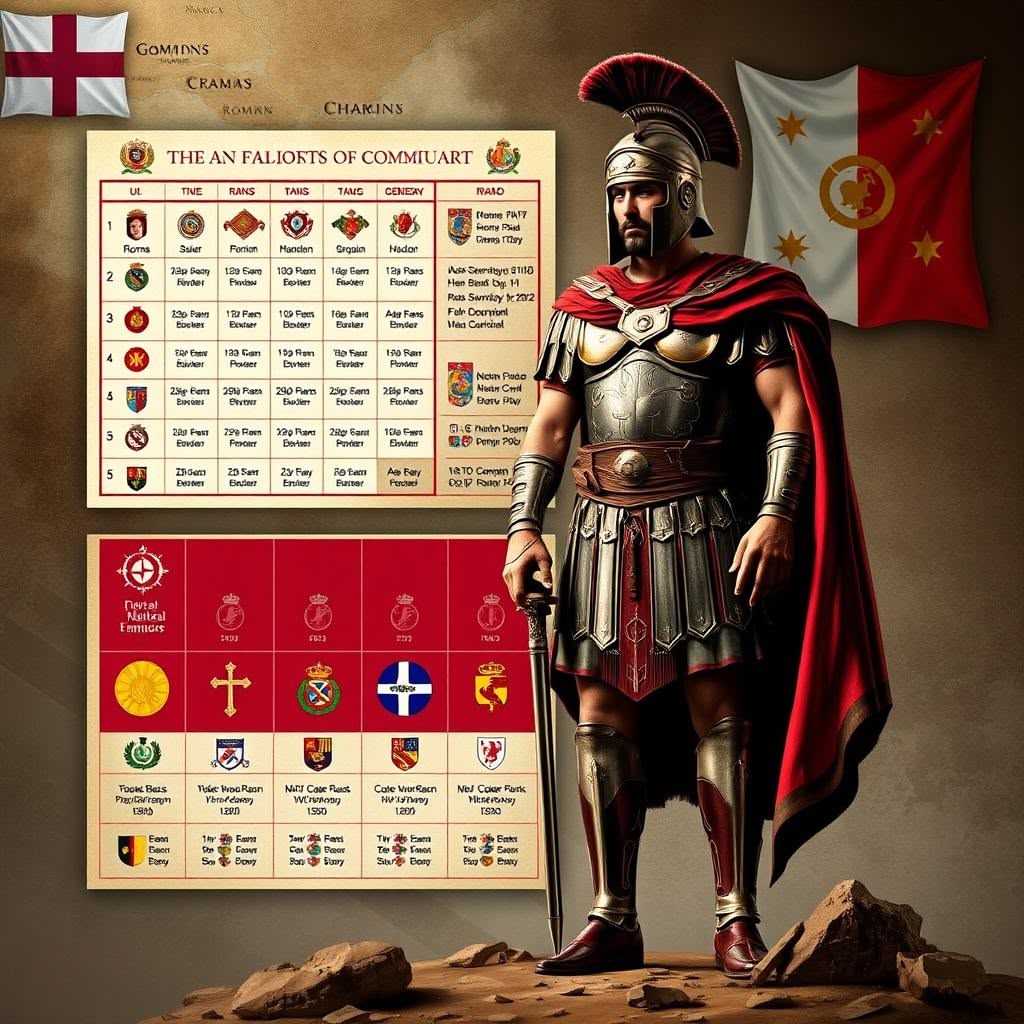
The Backbone of Command: Rome’s Non-Commissioned Officers
Perhaps the most enduring legacy of Rome’s military organization was its development of what we would today recognize as non-commissioned officers (NCOs)—professional soldiers who rose from the ranks to exercise leadership without holding commissioned authority from the state.
The principales formed the entry level of Roman NCOs. These included the tesserarius (guard commander), signifer (standard bearer), and optio (second-in-command to the centurion). Each managed specific aspects of their unit’s functioning, from security to administration to tactical leadership.
The modern equivalents would be Corporals and Sergeants across NATO forces—the front-line leaders who directly supervise soldiers and implement the orders of commissioned officers. Like their Roman counterparts, modern NCOs serve as the crucial link between the strategic direction of officers and the tactical execution by common soldiers.
The apex of the Roman NCO corps was the famed centurion. Commanding a century of approximately 80 men, centurions were the operational commanders who turned plans into action. Selected for their experience, leadership, and fighting prowess, centurions were the vital middle management of Rome’s military machine. Their effectiveness largely determined whether Rome’s grand strategies succeeded or failed on the battlefield.
Within the centurionate existed its own hierarchy. The most junior centurions commanded the hastati (least experienced troops), while the most senior led the triarii (veterans). The primus pilus, or “first spear,” was the senior centurion of an entire legion—a position of enormous prestige and influence.
The modern equivalents of centurions span from Staff Sergeants to Sergeant Majors in NATO forces. Like centurions, these senior NCOs blend tactical expertise with leadership responsibilities, forming the crucial bridge between strategic planning and battlefield execution.
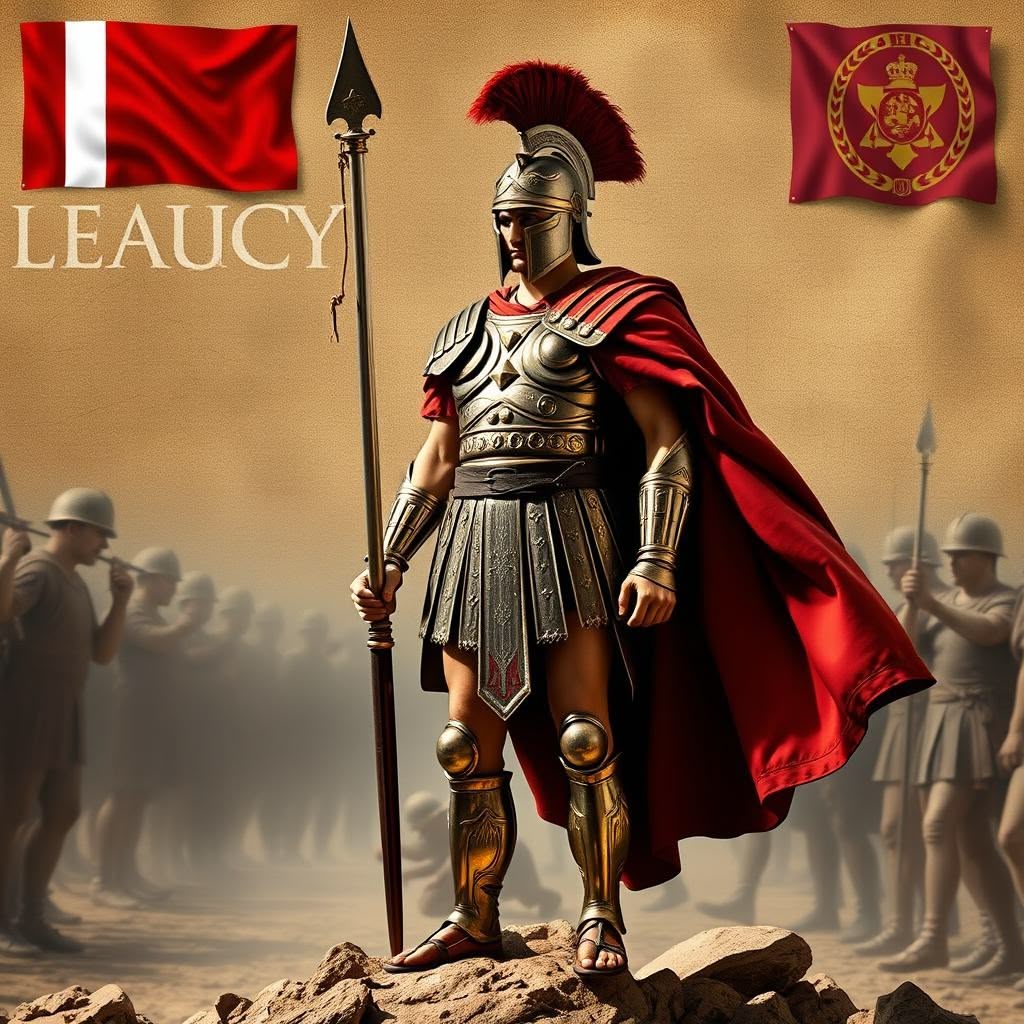
The Strategic Leaders: Rome’s Officer Corps
While Rome’s NCO structure has clear modern parallels, its officer corps differed significantly from contemporary military organizations. Roman officers weren’t products of military academies but were drawn from the political and social elite—a reflection of Rome’s integration of military and political leadership.
The tribuni militum (military tribunes) served as a legion’s senior officers, with six assigned to each legion. Typically young men of senatorial or equestrian rank, these officers used military service as a stepping stone in their political careers rather than as a profession in itself. Their modern equivalents would be junior to mid-grade officers—Lieutenants through Majors in NATO forces.
A critical difference emerges here: while modern officers typically commit to military careers spanning decades, Roman tribunes often served relatively brief tours before returning to political life. This rotation created a leadership corps with broader political awareness but potentially less military specialization than modern professional officers.
Above the tribunes stood the legatus legionis (legion commander), typically a senator appointed to command for a period of three to four years. Commanding approximately 5,000 men, the legatus held a position roughly equivalent to a modern Colonel or Brigadier General.
At the highest level of Roman military command was the dux or general—often a consul or other high magistrate who commanded multiple legions. During the Republic, this command was typically temporary and specific to a campaign. Under the Empire, command structures became more formalized, with positions like the praefectus praetorio (Praetorian Prefect) emerging as permanent senior military offices.
The modern equivalents would be Generals and Field Marshals (or their naval equivalents of Admirals and Fleet Admirals)—the strategic leaders responsible for entire theaters of operation or service branches.
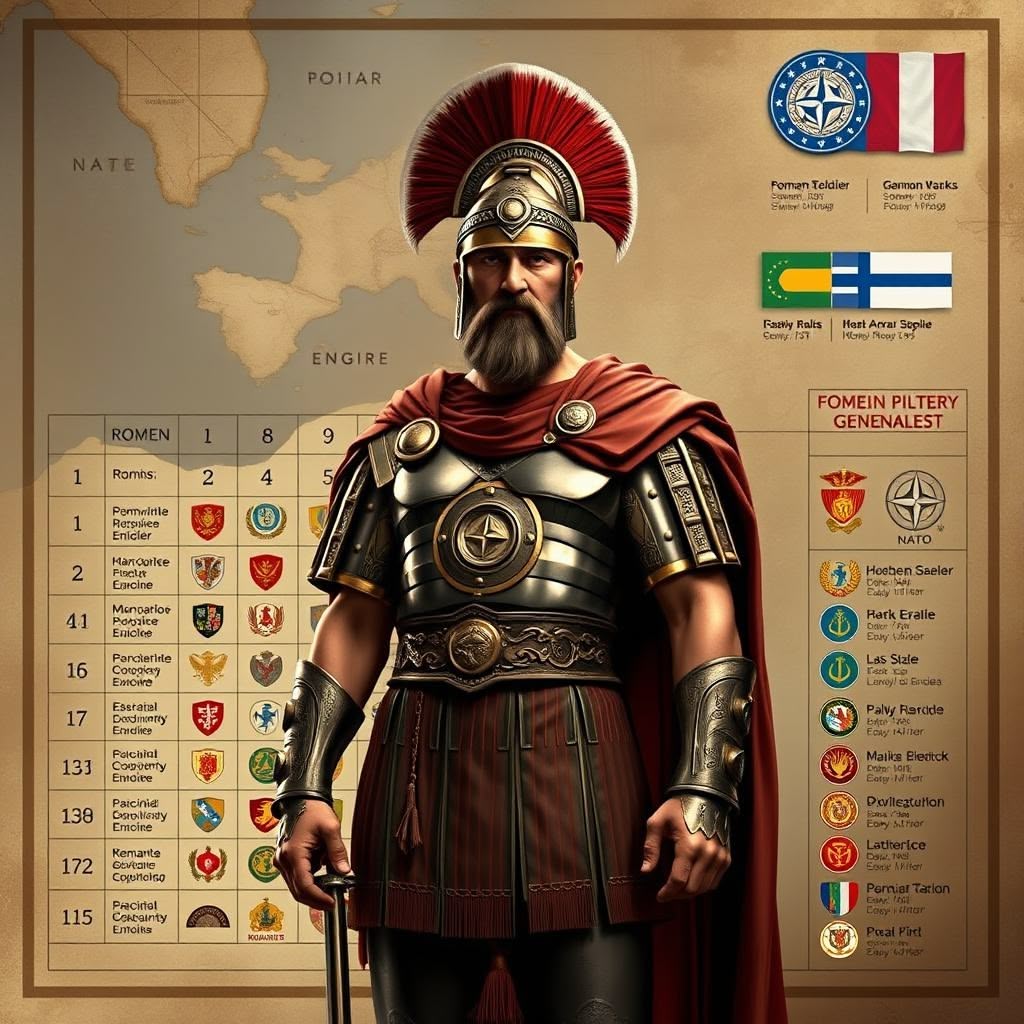
Elite Forces: The Special Units of Rome
Beyond the standard legion structure, Rome developed specialized units that parallel modern special forces and elite units. The speculatores functioned as reconnaissance and intelligence personnel, gathering information about enemy movements and terrain. Their modern equivalents might be found in military intelligence branches or reconnaissance units.
The exploratores served as scouts and light infantry, operating ahead of the main force to secure routes and gather tactical intelligence. Their contemporary counterparts would include scout platoons and cavalry reconnaissance units.
Perhaps the most elite of Rome’s special forces were the Praetorian Guard. Originally the personal bodyguard of generals, under the Empire they evolved into an elite force responsible for the Emperor’s security. Praetorians received better pay, equipment, and terms of service than regular legionaries. Their modern equivalents might include presidential security details, such as the U.S. Secret Service, as well as elite guard units like the British Household Division or Russian Kremlin Regiment.
Another specialized unit was the frumentarii, which began as supply officers but evolved into an intelligence service conducting espionage and counterintelligence operations. Their functions parallel modern military intelligence agencies and counterintelligence units.
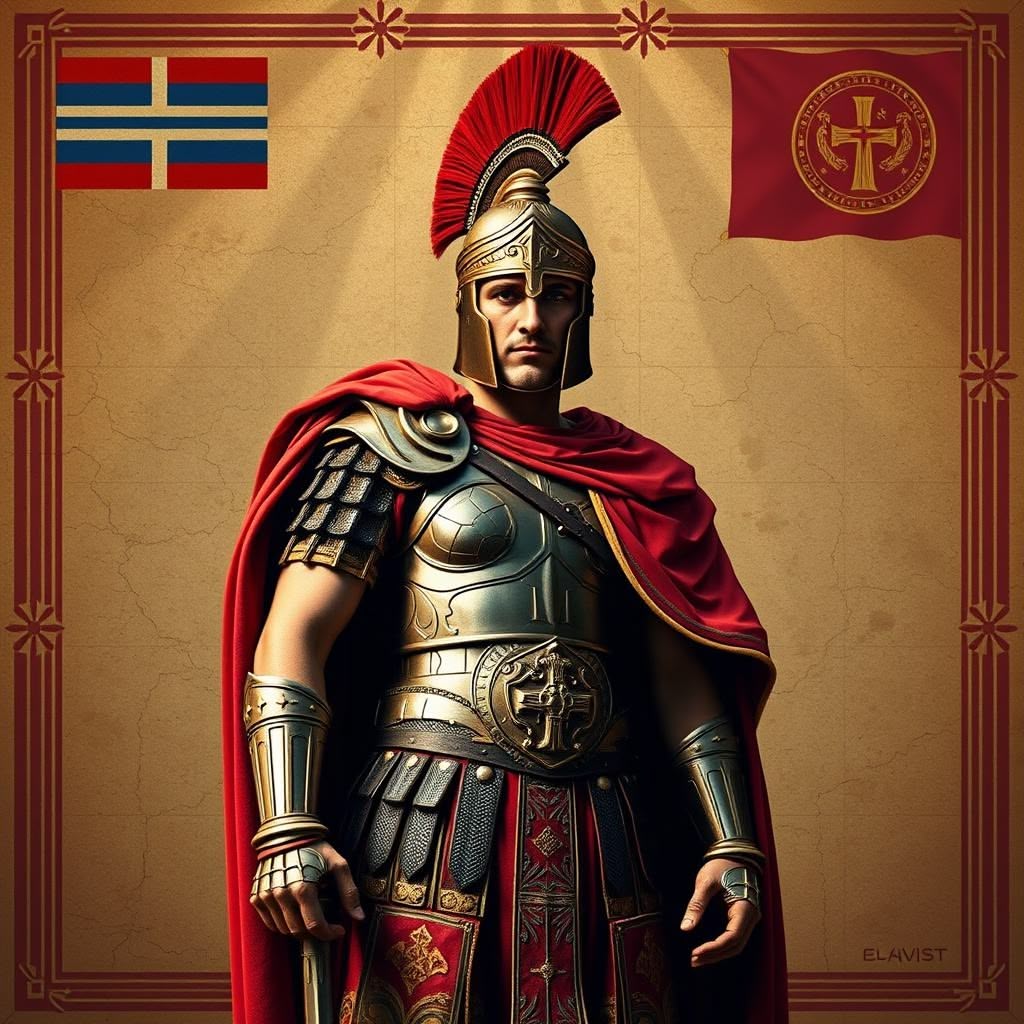
The Administrative Backbone: Support Ranks
Rome’s military effectiveness relied not just on combat forces but on a sophisticated support structure that maintained logistics, finance, and administration. The beneficiarii served as administrative staff to senior officers, handling correspondence and coordination. Their modern equivalents would be administrative specialists and staff officers.
The quaestor managed financial matters for the legion, including soldier pay and procurement. Today, financial management specialists and budget officers fulfill similar functions in modern military organizations.
The praefectus castrorum (camp prefect) oversaw logistics, supply, and camp construction—critical functions for an army on campaign. Contemporary equivalents would include logistics officers and quartermaster corps personnel.
While modern military organizations have developed far more specialized and extensive support structures, including entire branches dedicated to logistics, medicine, engineering, and other support functions, the Roman understanding of the importance of these roles represented a revolutionary advancement in military organization.
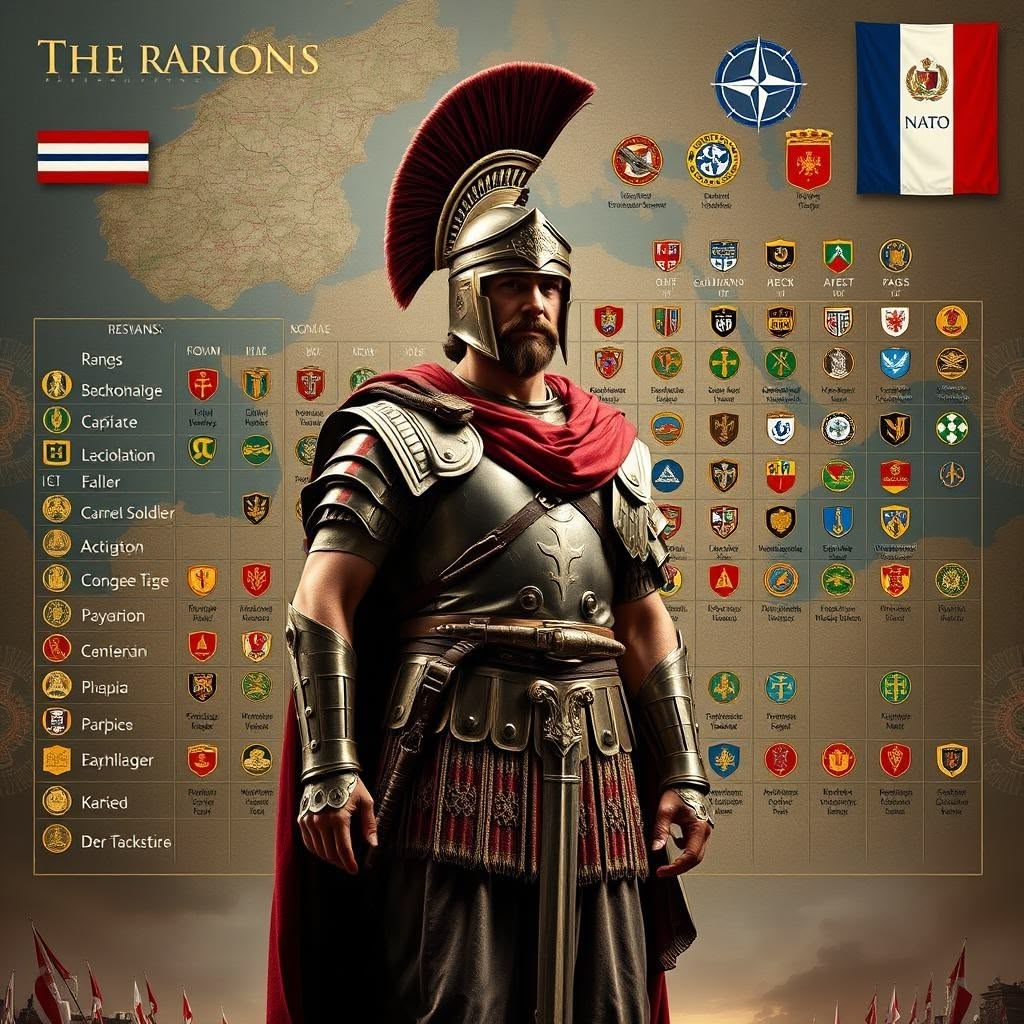
The Naval Dimension: Rome’s Maritime Ranks
Though primarily remembered for its land forces, Rome maintained a significant naval presence, particularly after the Punic Wars demonstrated the strategic importance of sea power. The trierarchus commanded individual ships, equivalent to modern naval Captains. The navarchus commanded squadrons, similar to contemporary Commodores or Rear Admirals.
The praefectus classis commanded entire fleets, with authority comparable to modern Fleet Admirals or Naval Chiefs of Staff. While Rome never developed naval traditions as distinctive as land-based ones, these positions established precedents that would influence later naval hierarchies.
Comparative Analysis: Roman vs. Modern NATO Rank Structure
To fully appreciate the parallels between Roman and modern military hierarchies, consider this comparative overview of approximate equivalencies:
Enlisted/Common Soldiers
Roman: Miles Gregarius (Common Soldier)
Modern NATO: Private/Seaman/Airman
Roman: Immunis (Specialist)
Modern NATO: Private First Class/Specialist
Non-Commissioned Officers
Roman: Tesserarius (Guard Commander)
Modern NATO: Corporal
Roman: Optio (Century Second-in-Command)
Modern NATO: Sergeant
Roman: Centurion (Century Commander)
Modern NATO: Staff Sergeant through Sergeant Major
Roman: Primus Pilus (Senior Centurion)
Modern NATO: Command Sergeant Major/Sergeant Major of the Army
Officers
Roman: Tribunus Militum (Military Tribune)
Modern NATO: Lieutenant through Major
Roman: Legatus Legionis (Legion Commander)
Modern NATO: Colonel/Brigadier General
Roman: Dux/General (Army Commander)
Modern NATO: Major General through General
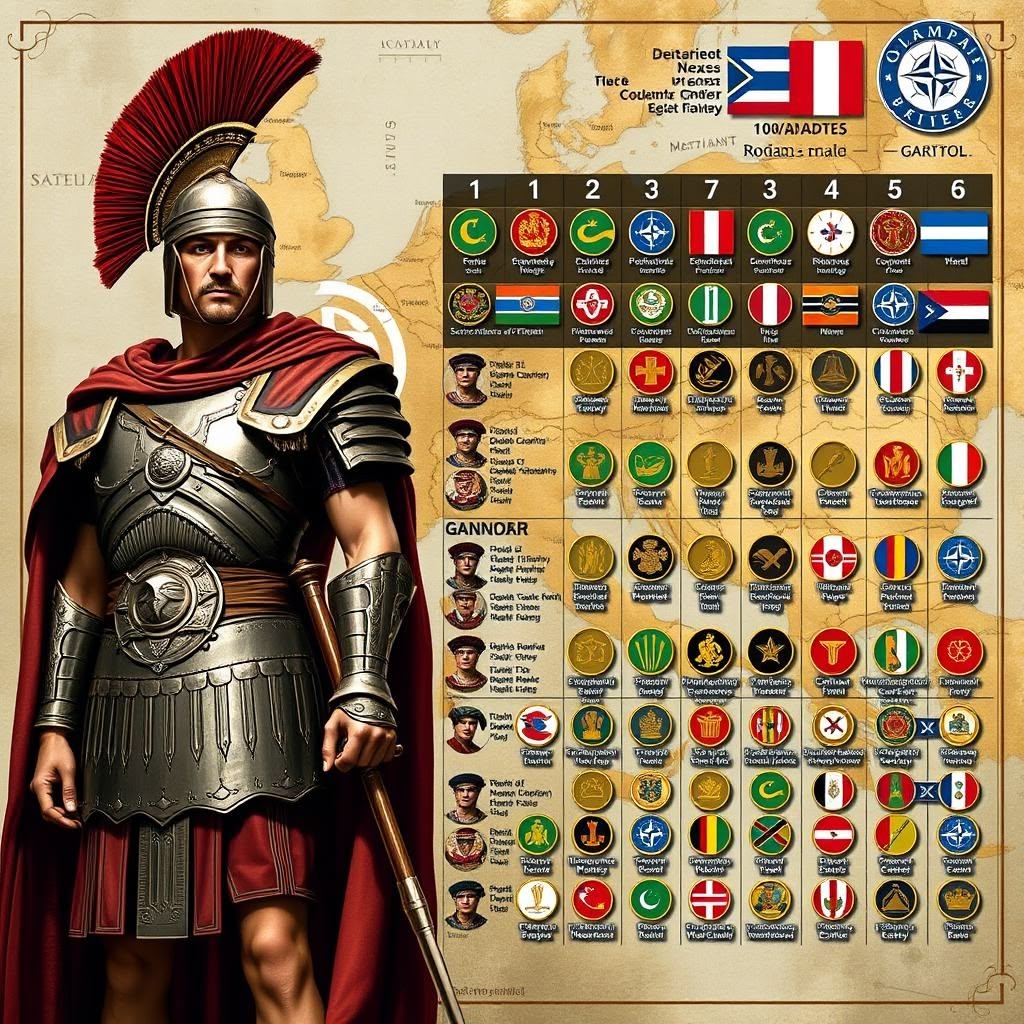
Rome’s Enduring Influence on Military Organization
The Roman military rank structure’s influence extends far beyond mere terminology or superficial parallels. Its fundamental contributions to military organization include principles that continue to shape armed forces worldwide:
The concept of a clear chain of command with distinct levels of authority and responsibility represents perhaps Rome’s most enduring organizational legacy. Modern military forces universally adopt this principle, recognizing its essential role in maintaining operational effectiveness and command coherence.
Rome’s development of a professional NCO corps—career soldiers who provided continuity, expertise, and front-line leadership—created a model that modern forces universally embrace. Today’s military leaders recognize, as Rome did, that professional NCOs provide the stability and tactical expertise necessary for effective operations.
The Romans also pioneered the integration of specialized support functions within a unified command structure. While modern militaries have developed far more extensive specialization, the fundamental understanding that combat effectiveness depends on logistical, medical, engineering, and administrative support traces directly to Roman innovations.
Perhaps most importantly, Rome created a scalable organizational model that could expand or contract as strategic needs demanded. The modular structure of centuries, cohorts, and legions provided a template that allowed for consistent command ratios and operational procedures regardless of force size—a principle that modern military organization continues to follow.
The Evolution Gap: Where Modern and Roman Structures Diverge
Despite these profound similarities, significant differences separate Roman and modern military hierarchies. Modern forces have developed far more specialized branches and career paths than existed in the Roman system. While Rome maintained a relatively homogeneous force with specialization primarily at the unit level, modern militaries feature extensive specialization at the individual level.
Modern officer corps are professional career soldiers rather than political figures serving military tours. This represents a fundamental shift from the Roman model, where military command was often an extension of political authority rather than a separate professional domain.
The scale of modern command also far exceeds Roman precedents. While a Roman general might command tens of thousands of troops at maximum, modern senior commanders can direct forces numbering in the hundreds of thousands across global theaters of operation.
Modern military structures also incorporate technological dimensions entirely absent from the Roman model, including air forces, cyber commands, and space forces. These represent organizational adaptations to new domains of warfare that the Romans could never have envisioned.
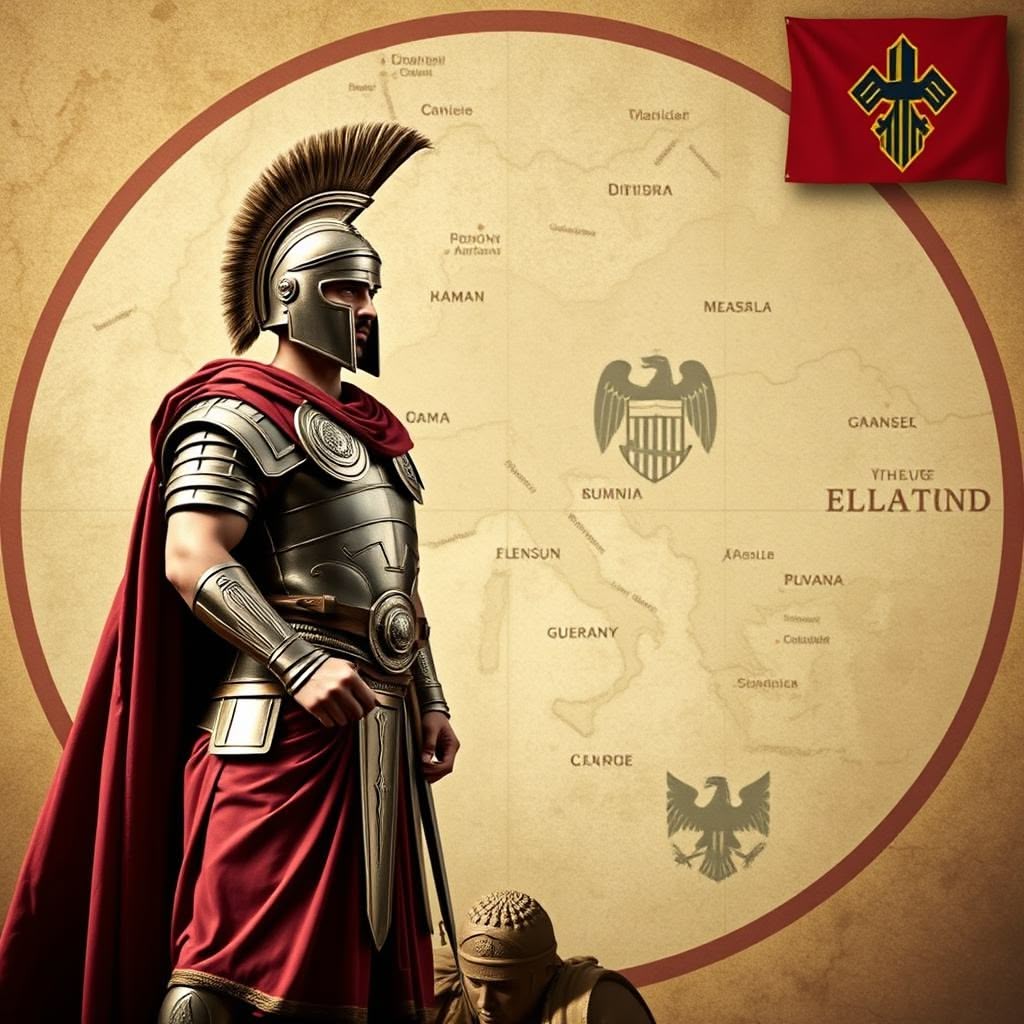
Why Roman Military Organization Still Matters
Understanding the Roman roots of military organization offers more than historical curiosity—it provides insight into why modern armed forces are structured as they are. Many aspects of military organization that seem intuitively obvious today represent hard-won organizational wisdom first developed by Roman commanders over centuries of trial and error.
For military professionals, recognizing these historical continuities offers perspective on the enduring principles that transcend technological and societal changes. The fundamental challenges of command, coordination, and control remain remarkably consistent across millennia, and Rome’s solutions to these challenges continue to inform modern approaches.
For organizational leaders in any field, Rome’s military hierarchy demonstrates how effective organizational structures can create institutional capabilities far greater than the sum of individual contributions. The Roman legion’s effectiveness stemmed not primarily from individual heroism but from organizational coherence—a lesson that remains relevant across all organizational contexts.
Perhaps most importantly, the enduring influence of Roman military organization reminds us that effective institutional design represents one of humanity’s most consequential innovations. The ability to coordinate large groups of people toward common objectives through hierarchical structures has shaped history as profoundly as any technological advancement.
The Martial Legacy of Rome in Today’s World
The next time you observe a military parade or ceremony, look beyond the uniforms and weapons to the organizational structure they represent. The precise lines of command, the distinct insignia of rank, the clear progression from junior to senior positions—all echo organizational principles first systematized by Roman military reformers.
From the centurion to the sergeant, from the tribune to the lieutenant, from the general to the, well, general—the language and logic of military leadership continues to reflect its Roman origins. This remarkable continuity across more than two millennia testifies to the enduring value of Rome’s organizational innovations.
Military organization represents just one dimension of Rome’s vast legacy, but it may be among its most consequential contributions. The ability to project power effectively through hierarchical command enabled not just Rome’s expansion but the functioning of every major military force that followed. In this sense, every modern soldier stands, knowingly or not, in the long shadow of the Roman legions that marched into history millennia ago.
The ranks and structures that once directed Rome’s eagles across ancient battlefields continue to guide modern forces in ways both obvious and subtle. In this remarkable continuity, we find one of history’s most enduring organizational legacies—a testament to Roman pragmatism and organizational genius that continues to shape our world today.

